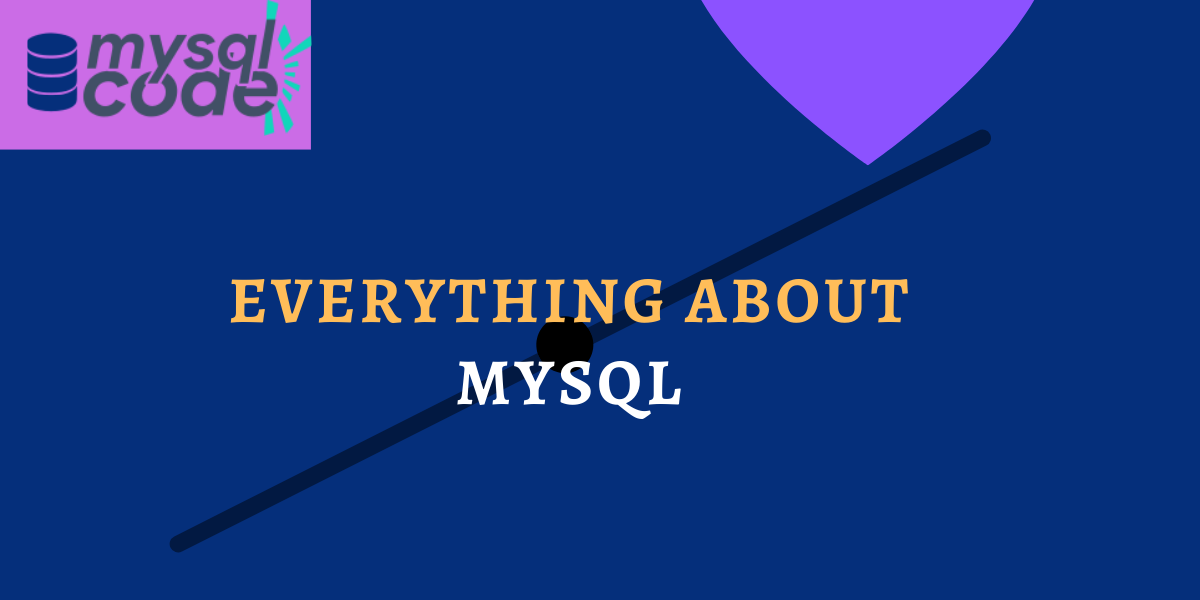MySQL is one of the popular and widely used database management systems in the market. It is an open-source relational database management system where users can insert, manipulate, fetch, control and delete the data using structured query language, commonly known as SQL.
In this article, we will see everything about MySQL that you need to know. Anyone involved in IT must be known the following facts and information along with basic familiarity with MySQL terminologies and syntaxes.
What is MySQL?
First of all, you might be thinking about what is there behind the “MySQL” name.
MySQL name is a combination of “My” which is the name of MySQL’s creator Michael Widenius’s daughter and “SQL”.
MySQL is an open-source relational database management system which was originally developed at MySQL AB in 1995. The MySQL AB was acquired by SUN Microsystems in 2008 and SUN got acquired by Oracle Corporation in 2010.
So, MySQL is currently being developed and maintained by the Oracle Corporation.
MySQL is open-source in nature, and consists of a rich feature set, having good support from Oracle as well as the community.
It is currently used by top tech companies such as Facebook, Youtube, Wikipedia, Flickr etc which shows how good and powerful MySQL is.
Also, MySQL is a part of the widely used LAMP tech stack (Linux, Apache, MySQL, PHP).
| Original Developer | MySQL AB |
| Current Developer | Oracle Corporation |
| Operating System | Linux, Windows, macOS, Solaris |
| Initial Release | 23 May 1995; 27 years ago |
| Written in | C, C++ |
| Website | https://www.mysql.com/ |
| Repository | https://github.com/mysql/mysql-server |
Features of MySQL
The rich feature set is the main reason behind the success of MySQL. It was originally developed in order to make a faster, simpler and more reliable database management system. However, Oracle Corporation is developing more features in it in order to stay at the top of the competition.
Following are the main features of the MySQL DBMS.
Open-Source
It is one of the main features of MySQL which makes it grow, adapt to the changes and overcome bugs and security breaches.
MySQL is freely available for everyone to study, learn and update based on requirements. One can simply visit the MySQL repository and download all the files.
Scalable
When developing an application, it is very important to consider scalability in the future. It is very important to implement a database management system which is faster, reliable, scalable and appropriate for the application use case.
Suppose your application is being used by thousand users as of now, which is not so many records. However, there might be a chance that, in future, there can be millions of users using your application. In that scenario, the application must work in the same way it works previously. That is, the database should not take much time for operations such as insert, update, delete and fetch.
Wide Range of Data Types
MySQL provides you with an array of data types to store the values in the tables. Basically, datatypes make sure that no wrong data is getting entered into the cell.
Some of the available data types in MySQL are- INT, FLOAT, CHAR, VARCHAR, DATETIME, DOUBLE, BLOB, DATE, TIME, etc.
Compatibility
MySQL is developed in order to work on multiple operating systems such as Windows, Linux, macOS, Polaris, varieties of UNIX OS, and FreeBSD.
Easy to Use
MySQL, nonetheless, is very easy to learn and use in comparison to other DBMS out there. SQL syntaxes of MySQL are similar to English vocabulary which makes it easy to learn.
Secure
Security is one of the most important and primary concerns when choosing the best DBMS for your application.
MySQL provides user account management and access privilege system in order to provide high security. Only the admin has full access and can create, modify and remove users from the system along with giving and revoking the permission to operate on the database/tables.
Programming Language Support
MySQL supports almost all major programming languages such as C, C++, Python, Java, NodeJS, PHP, Ruby, Perl, etc. However, you will need to use a connector in order o connect a MySQL server with your program.
Getting Started With MySQL
As stated earlier, MySQL is one the easiest DBMS to learn and implement. Its syntaxes are extensions to the standard SQL which makes them easy to understand and grasp.
The first step to learning MySQL is to download and install it on your local machine.
The easiest way to download and install all the required packages is to install the MySQL installer first.
You can install the MySQL installer from the official website.
After installing it, let it do the work on its own. It will install all the required software programs automatically.
You can then start learning MySQL by reading our tutorials which are very easy to understand and explained very well using multiple real-time examples.
Conclusion
MySQL, without a doubt, will remain popular and highly in demand for a long time. You can learn MySQL if you are a student and it will help you to develop websites and apps for corporations as well as college projects. No time could be better to learn MySQL in order to kickstart your career.
